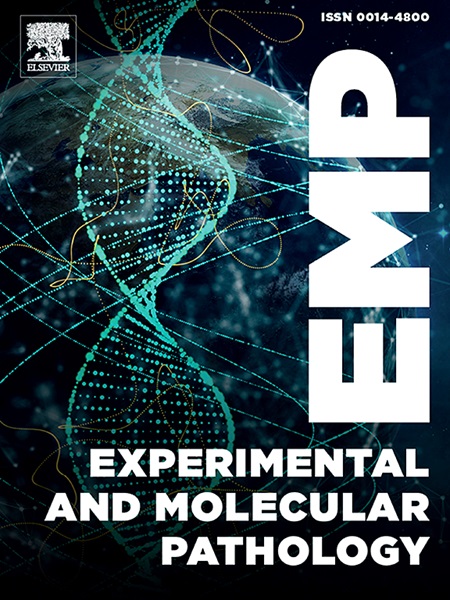Pathobiology of myocardial and cardiomyocyte injury in ischemic heart disease: Perspective from seventy years of cell injury research
IF 3.7
4区 医学
Q2 PATHOLOGY
引用次数: 0
Abstract
This review presents a perspective on the pathobiology of acute myocardial infarction, a major manifestation of ischemic heart disease, and related mechanisms of ischemic and toxic cardiomyocyte injury, based on advances and insights that have accrued over the last seventy years, including my sixty years of involvement in the field as a physician-scientist-pathologist. This analysis is based on integration of my research within the broader context of research in the field. A particular focus has been on direct measurements in cardiomyocytes of electrolyte content by electron probe X-ray microanalysis (EPXMA) and Ca2+ fluxes by fura-2 microspectrofluorometry. These studies established that increased intracellular Ca2+ develops at a transitional stage in the progression of cardiomyocyte injury in association with ATP depletion, other electrolyte alterations, altered cell volume regulation, and altered membrane phospholipid composition. Subsequent increase in total calcium with mitochondrial calcium accumulation can occur. These alterations are characteristic of oncosis, which is an initial pre-lethal state of cell injury with cell swelling due to cell membrane dysfunction in ATP depleted cells; oncosis rapidly progresses to necrosis/necroptosis with physical disruption of the cell membrane, unless the adverse stimulus is rapidly reversed. The observed sequential changes fit a three-stage model of membrane injury leading to irreversible cell injury. The data establish oncosis as the primary mode of cardiomyocyte injury in evolving myocardial infarcts. Oncosis also has been documented to be the typical form of non-ischemic cell injury due to toxins. Cardiomyocytes with less energy impairment have the capability of undergoing apoptosis and autophagic death as well as oncosis, as is seen in pathological remodeling in chronic heart failure. Work is ongoing to apply the insights from experimental studies to better understand and ameliorate myocardial ischemia and reperfusion injury in patients. The perspective and insights in this review are derived from basic principles of pathology, an integrative discipline focused on mechanisms of disease affecting the cell, the organizing unit of living organisms.
缺血性心脏病心肌和心肌细胞损伤的病理生物学:七十年细胞损伤研究的视角。
急性心肌梗死是缺血性心脏病的一种主要表现形式,本综述基于过去七十年(包括我作为一名医生、科学家和病理学家参与该领域研究的六十年)积累的进展和见解,从病理生物学的角度阐述了急性心肌梗死的病理生理以及缺血性和毒性心肌细胞损伤的相关机制。这一分析的基础是将我的研究与该领域更广泛的研究相结合。我的研究重点之一是通过电子探针 X 射线显微分析法(EPXMA)直接测量心肌细胞中的电解质含量,以及通过呋喃-2 微谱荧光测定法测量 Ca2+ 通量。这些研究证实,细胞内 Ca2+ 的增加发生在心肌细胞损伤进展的过渡阶段,与 ATP 消耗、其他电解质改变、细胞体积调节改变和膜磷脂成分改变有关。随后会出现总钙增加和线粒体钙积聚。这些变化是细胞坏死的特征。细胞坏死是一种细胞损伤的初始致死前状态,由于 ATP 贫竭细胞的细胞膜功能失调而导致细胞肿胀;除非迅速逆转不良刺激,否则细胞坏死会迅速发展为细胞膜物理破坏的坏死/坏死。观察到的连续变化符合膜损伤导致不可逆细胞损伤的三阶段模型。这些数据确立了瘤变是演变性心肌梗死中心肌细胞损伤的主要模式。据文献记载,瘤变也是毒素导致的非缺血性细胞损伤的典型形式。能量损伤较小的心肌细胞有能力发生凋亡和自噬死亡以及肿瘤病变,这在慢性心力衰竭的病理重塑中可以看到。目前正在努力应用实验研究的见解,以更好地理解和改善患者的心肌缺血和再灌注损伤。本综述的观点和见解来自病理学的基本原理,病理学是一门综合性学科,重点研究影响细胞(生物体的组织单位)的疾病机制。
本文章由计算机程序翻译,如有差异,请以英文原文为准。
求助全文
约1分钟内获得全文
求助全文
来源期刊
CiteScore
8.90
自引率
0.00%
发文量
78
审稿时长
11.5 weeks
期刊介绍:
Under new editorial leadership, Experimental and Molecular Pathology presents original articles on disease processes in relation to structural and biochemical alterations in mammalian tissues and fluids and on the application of newer techniques of molecular biology to problems of pathology in humans and other animals. The journal also publishes selected interpretive synthesis reviews by bench level investigators working at the "cutting edge" of contemporary research in pathology. In addition, special thematic issues present original research reports that unravel some of Nature''s most jealously guarded secrets on the pathologic basis of disease.
Research Areas include: Stem cells; Neoangiogenesis; Molecular diagnostics; Polymerase chain reaction; In situ hybridization; DNA sequencing; Cell receptors; Carcinogenesis; Pathobiology of neoplasia; Complex infectious diseases; Transplantation; Cytokines; Flow cytomeric analysis; Inflammation; Cellular injury; Immunology and hypersensitivity; Athersclerosis.

 求助内容:
求助内容: 应助结果提醒方式:
应助结果提醒方式:


